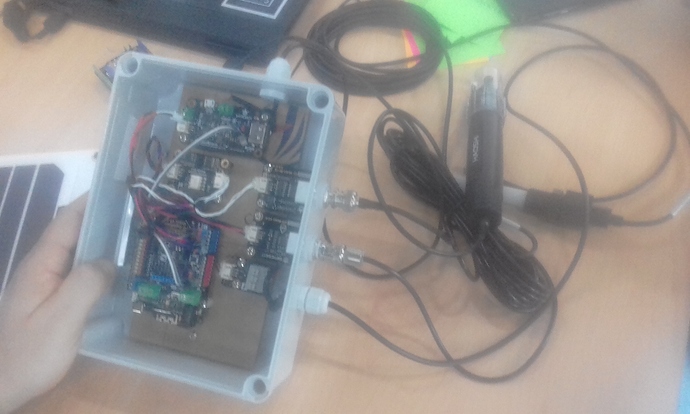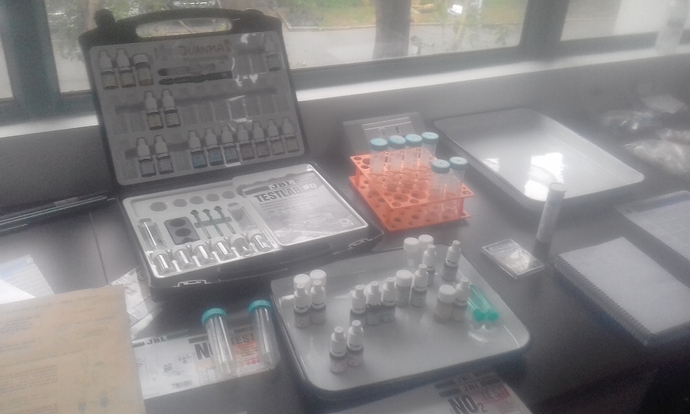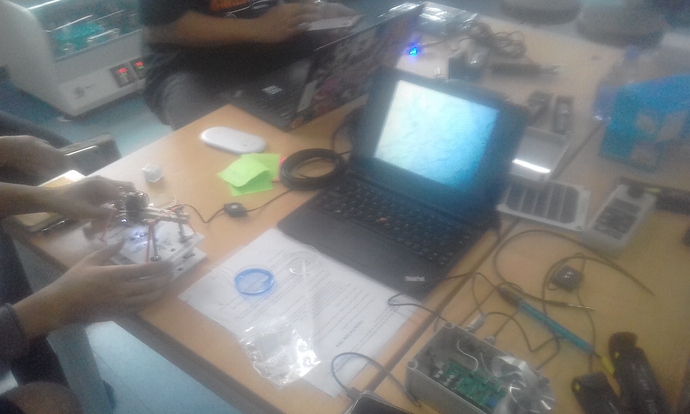Summary
The conveners introduced the topic with some examples where it was very clear that wáter quality monitoring can not be left in the hands of governments or corporations, citizens and communities must step in. The workshop was divided in four main topics related to monitorig and approached by four different groups. 1) OScH for continuous testing, 2) Chemical testing, 3) Sampling outdoors and 4) Microscopy. In the end we discussed toghether the experience and shared the results and what we learned from the session.
Notes
Conveners/Facilitators: Juanma, VJ Pixel, Rockets
Documentation: Nano
Participants: Pollock, M.Mary, Cassie, Andriy, Jessica, Ashkram, Nano, Shan, Felipe
Introduction
Juanma presented three examples to make the point of why should we care about wáter monitoring. To put pressure on governments and corporations!!
He also explained some of the basics and differences of what kind of parameters should we measure in “environmental wáter” and “drinking wáter”
This examples, explanations, guides for teachers/students and many more resources can be found in http://openscienceschool.org/home/scienceinschools/. There are several translations of this material avaiable.
OScH for wáter quality monitoring
In the presentation of the workshop, VJ pixel commented the experience of Rede Info Amazonia http://rede.infoamazonia.org/ in the use of OScH Mae d’acqua http://rede.infoamazonia.org/mae-dagua/ and exposed that one of the main questions was on How to improve the accuracy and reliability of sensors?
However, this was also brought up as an example of how in OScH there in no need to “reinvent the wheel”, and Rockets from DFRobot explained that their device Knowflow Build KnowFlow: automatic water monitor - DFRobot is based on Mae d’acqua and that they were working on improving the device. The device is able to measure Temp, pH, EC and ORP. The are using an industrial pH probe for more polluted environments.
Chemical testing
For the chemical testing Juanma brought the JBL test kit JBL Testlab Koi. The kit is a set of reagent to add to the water samples in order to achieve colorimetric quantitatives evaluations.
We also made some basic colorimetric analysis with an spectrophotometer from CRI.
Sampling of wáter outdoors
This group take samples from the sewage, the pond and …… Add pictures and explanation please because I was not there
Microscopic analysis
VJ pixel found a mascot (he was very pleased!) in one of the samples that were taken from the pond with his recently assembled PLab microscope. This is a bad picture but she was so pretty!!
Related Future Actions
- Develop a protocol to calibrate spectrophotometers
- Evaluate how to adapt some of the chemical test to the DropBot
- DFRobot will evaluate the adoption of this colorimeter Fernando Castro / ColorLabFD · GitLab that is based on the IO Rodeo model Open Source Colorimeter Project – IO Rodeo


